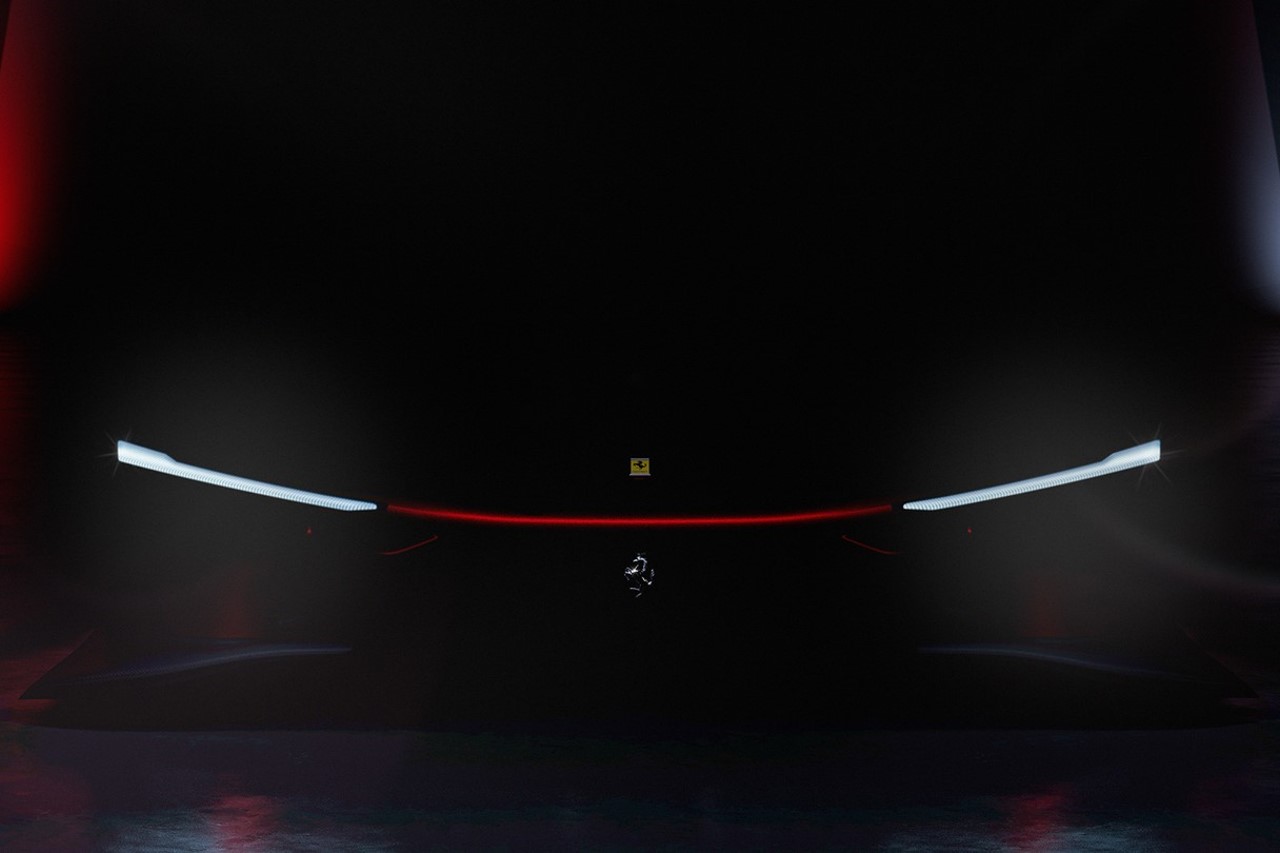
Ferrari unveils its strategic plan for the 2023-2026 period and already indicates its objectives for 2030. The first electric model announced for 2025 will soon be followed by others. A new Supercar is in development. The Purosangue SUV is confirmed for 2022 with a V12.
Ferrari is almost at the end of its 2018-2022 strategic plan. And the Italian manufacturer will have kept its commitments despite many obstacles, from the death of its former boss Sergio Marchionne to the shortage of semiconductors, including the coronavirus pandemic and inflation. Ferrari will notably have launched fifteen new models – including its first plug-in hybrids, including the 296 V6 engine range – and is about to conclude with the presentation of its first SUV (see below). The time has therefore come for the firm to unveil its projects for the period 2023-2026.


The Purosangue SUV in September 2022
As a preamble therefore, Ferrari has confirmed the arrival of the Purosangue SUV for this year. The vehicle will be officially unveiled in September 2022. It will be powered by a “pure V12”, Maranello is promised, which seems to indicate that the twelve-cylinder will not be turbocharged or electrified. During its commercial cycle, the Purosangue could represent up to 20% of the manufacturer’s sales, but no more.

This SUV will allow Ferrari to expand even further its clientele, which has already grown by 25% and whose average age has been reduced by eight years over the past five years. In addition, 60% of collectors buying the most high-end models over this period were new customers, increasing the number of cars in their garage by 25%. Crisis ? What crisis?


40% electric in the range in 2030
Another confirmation: Ferrari will present its first 100% electric model in 2025. Electrification will accelerate at all levels in the company, which will add a building to its production center for this purpose. Its teams will design and manufacture in-house motors and inverters dedicated to hybrid and electric vehicles. The cells for the batteries, of third-party manufacture, will be integrated by hand into modules specific to Ferrari. The manufacturer thus guarantees its customers an offer that is always unique, which will also involve a specific sound for “zero emission” propulsion cars. The building will also house a new paint shop to offer even more customization possibilities to customers.

Ferrari predicts that in 2026 electric vehicles will represent around 5% of its range, hybrids 55%, and exclusively thermal models 40%. But the prancing horse already sees further and considers respectively 40% electric, 40% hybrid and 20% pure thermal for 2030. It therefore does not intend to abandon its combustion engines by then, betting on further improved efficiency and work on alternative fuels to make them last. Ferrari does not intend to get into autonomous cars either and will not go up to level 3 of automated driving. Adaptive cruise control, lane keeping assistance, autonomous emergency braking and parking aids should therefore remain the main features offered in this area.

TO READ. Manufacturers going 100% electric by 2030 in Europe
A new Ferrari Supercar by 2026

The next Supercar from Ferrari, heir to the line of 288 GTO, F40, F50, Enzo and LaFerrari, will be presented during the period 2023-2026. The manufacturer, which puts a capital letter to this type of car considered internally as a range, indicates that the car in question will use technologies from F1 and endurance.
Unsurprisingly, it should therefore be electrified. Supercar and Icona models will represent 5% of 2022-2026 sales, special series 10%, and the regular range 85% according to Ferrari projections. Fifteen new models will be launched between 2023 and 2026.

Ferrari on the way to carbon neutrality
Ferrari aims for carbon neutrality by 2030. This will involve several measures, starting with the reduction of CO emissions2 of its industrial facilities. Photovoltaic panels, hydrogen fuel cells and biomethane will thus be used to supply electricity of 100% renewable origin to the production center according to the brand. Vehicle electrification should reduce carbon dioxide emissions from the range by 50% (average per car). The use of recycled aluminum in their construction must compensate for its share of the emissions linked to the raw materials used in the batteries and discharged upstream. Ferrari is therefore working on the entire life cycle of its cars, except for one detail. ” The end of the vehicle is not taken into consideration, because a Ferrari is eternal “, explains the company. Behind this presumptuous formulation hides the reality that most Ferraris are collected and therefore preserved for decades. “Scrapping” and “conversion bonus” rarely appear in the vocabulary of the brand’s customers, even if that does not prevent some of the productions from ending up in the scrapyard (accident, dismantling, abandonment, etc.).

Initiatives to offset CO emissions2 are also planned, such as reforestation and the purchase of carbon credits (financing actions to combat climate change). A market that is currently generating heated debates at European level. Ferrari indicates in passing that its carbon dioxide emissions in 2021 accounted for approximately 0.001% of global greenhouse gas emissions according to figures verified by a third-party organization. What put them into perspective with the plans to ban new thermal vehicles in 2035 carried by the European institutions and which some small series manufacturers could escape.
TO READ. Thermal shutdown in 2035. Which manufacturers will be exempted?

















